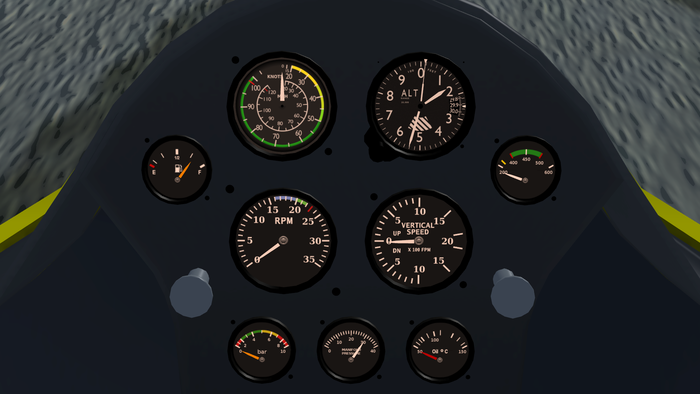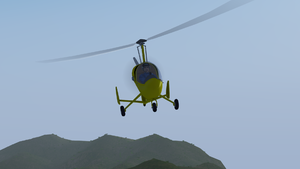Ranguli/JT-5B/info
The JT-5 is a homebuilt autogyro designed by Jukka Tervamaki in Finland 1969. The first flight was in 1973, but in 1974 the aircraft was sold to Vittorio Magni in italy. The design was later named 455MT-5 and M-5. A more modern incarnation was Magni M20 Talon.
Features
The new C172p has a much better 3D model and is now fully textured (including the interior). All the switches in the cockpit are clickable. It also has an improved FDM (Flight Dynamics Model - the "physics" of the plane), more complex procedures and new realistic checklists, new sound effects, and damage modelling. The aircraft can get damaged if mishandled (e.g. gear collapse after a hard landing).
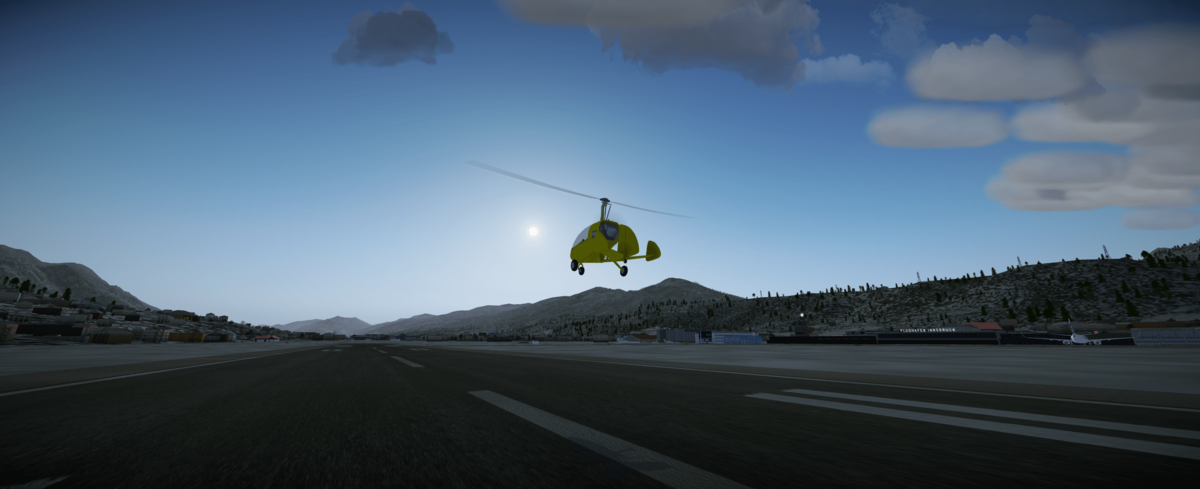
Handling The Aircraft
Pre-Flight Inspection
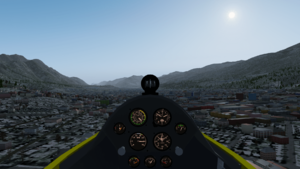
Cockpit view of the JT-5B autogyro after takeoff from LOWI.
It's recommended to use any exterior view or activate the walker for these procedures.
- Fuel quantity: add by clicking on the fuel tank caps above each wing (you can add a ladder in the Ground Equipment dialog and climb it with the walker as well)
Engine Start (manual and complex startup)
- Priming: prime the engine at least 3 times
Engine Start (automatically with Autostart)
- Click on the menu "Cessna C172P" and select "Autostart" in order to start the plane. Please note that the Autostart attempts to start the engine with the mixture full rich, so if you are taking off from a very high altitude airport you may need to manually start the plane.
Takeoff
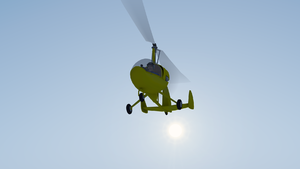
JT-5B autogyro soaring over Honolulu.
Climbout
Cruise
Landing
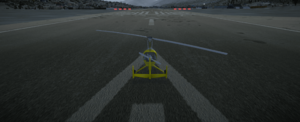
JT-5B autogyro sitting on the runway at LOWI.
Airspeeds
- See also Aircraft speed#V speeds
The information in this section is based on external resources.[1][2][3]
| Airspeed |
CAS
|
| Stall speed, landing configuration, VS0 |
46 - 48 kt
|
| Stall speed, clean, VS1 |
51 - 53 kt
|
| Rotation speed, VR |
55 kt
|
| Best angle of climb speed, VX |
59 kt
|
| Best rate of climb speed, VY |
76 kt
|
| Maximum flap extended speed, VFE |
85 kt
|
| Maneuvering speed, VA |
96 kt (floatplane)
|
| 99 kt (landplane)
|
| Maximum structural cruising speed, VNO |
127 kt
|
| Never exceed speed, VNE |
158 kt
|
External links
|
|---|
| | Civilian aircraft | |
|---|
| | Military aircraft | |
|---|
|
External links


